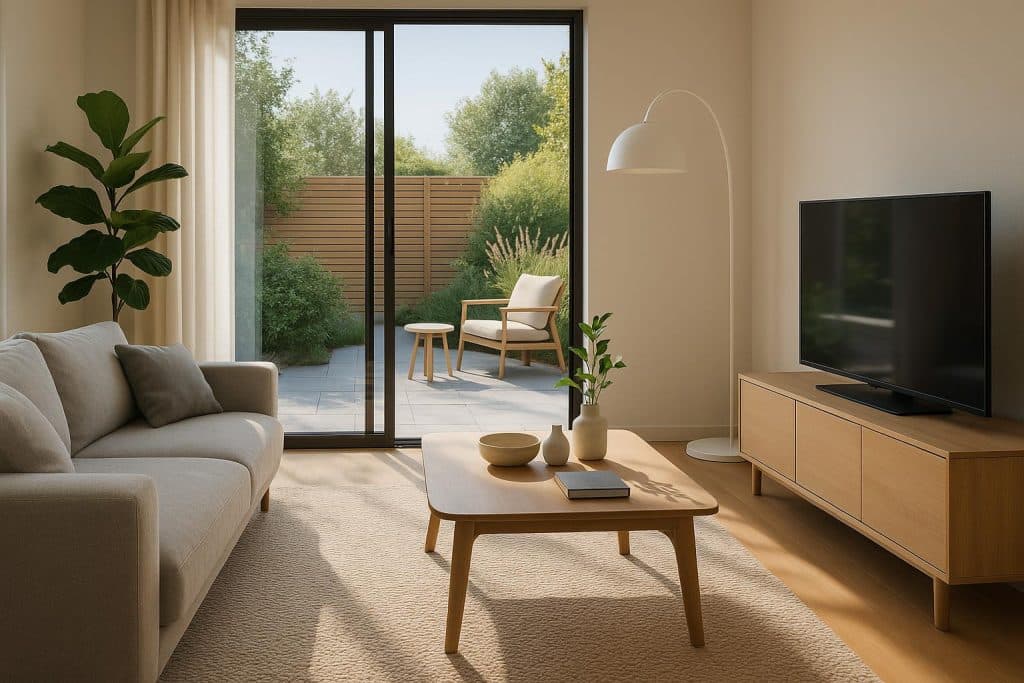In today’s fast-paced world, the meaning of “home” has changed dramatically. No longer just a shelter, it’s now a sanctuary, a space that balances comfort, functionality, and technology. Modern homeowners want environments that adapt to their lifestyles: places where they can live, work, recharge, and connect seamlessly.
From smart design to sustainability and flexible spaces, the future of comfortable living is being shaped by innovation, personalization, and the desire for balance.
1. The Rise of Functional Design
Functionality has become the cornerstone of modern home design. Today’s homeowners aren’t just focused on style, they want spaces that serve multiple purposes. Open-plan layouts, hidden storage solutions, and convertible rooms make it possible to maximize every square foot.
Kitchens that double as workstations, living rooms that flow into outdoor spaces, and guest rooms that transform into home offices are just a few examples of how design meets everyday practicality. The emphasis is on flexibility and flow creating homes that evolve with their occupants’ needs.
2. Sustainability Meets Style
The eco-conscious movement has had a profound impact on how we design and build homes. From reclaimed materials to energy-efficient appliances, sustainability is becoming synonymous with modern luxury.
Architects and designers are using green technologies like solar panels, passive heating and cooling systems, and low-VOC materials to create spaces that are both elegant and environmentally friendly. This thoughtful approach to building and material selection reflects a growing appreciation for craftsmanship, a philosophy shared by Cambria’s “Materials Meet Mastery” feature, which celebrates the artistry and innovation behind high-quality design.
3. Technology and the Smart Home Revolution
Technology continues to redefine comfort. Smart homes are no longer futuristic concepts, they’re the new standard. With a few taps on a smartphone, homeowners can control lighting, security systems, climate, and even kitchen appliances.
Voice assistants and AI-powered systems learn routines and preferences, adjusting automatically to save energy or enhance convenience. This digital integration gives homeowners peace of mind, especially when paired with sustainability, optimizing energy use and improving safety.
4. The Role of Nature in Modern Design
As urban living becomes denser, people crave a deeper connection to nature within their homes. This has inspired the biophilic design trend, integrating natural light, organic textures, plants, and open-air concepts into modern interiors.
Large windows, indoor gardens, and materials like stone and wood help bring the outdoors in. Even in city apartments, design elements that mimic nature can boost well-being, productivity, and relaxation, turning homes into restorative environments.
5. The Return of Personalization
Mass-produced designs are giving way to personal expression. Homeowners want their spaces to reflect who they are, not just what’s trending.
Custom furniture, handcrafted pieces, unique color palettes, and locally sourced materials are all ways to make a home feel truly individual. The growing popularity of renovation projects reflects this shift, people would rather improve and personalize their existing space than start from scratch.
6. Home Renovation: Breathing New Life into Familiar Spaces
While new builds continue to flourish, renovation has emerged as one of the strongest trends in home improvement. Homeowners are realizing that they don’t need a brand-new house to enjoy modern comfort; they just need a smarter, more thoughtful redesign.
Whether it’s updating a kitchen, remodeling a bathroom, or adding more functional space, renovation can transform outdated homes into contemporary masterpieces.
Companies like GVD Renovations exemplify this movement. With a strong focus on craftsmanship, design innovation, and customer care, they help homeowners reimagine their spaces for modern living, blending timeless quality with cutting-edge design.
Their approach reflects a growing desire for balance: keeping the charm of an existing home while upgrading it to meet the demands of today’s lifestyles.
7. The Psychology of Space: Comfort Beyond Aesthetics
Comfort isn’t just physical, it’s psychological. The way a room feels can deeply affect mood, focus, and energy levels. Modern home design takes this into account, emphasizing balance, natural light, and flow.
Minimalist spaces encourage calm and clarity, while warm colors and soft textures create a sense of coziness. The growing popularity of wellness-centered design, including meditation corners, spa-like bathrooms, and ergonomic layouts, shows that mental well-being is now at the core of comfortable living.
8. Designing for the Future
The future of home design will continue to merge technology, sustainability, and human-centered innovation. Homes will become more adaptive, eco-friendly, and personalized; integrating seamlessly with both nature and digital life.
Renovation and remodeling will play a crucial role in this evolution, helping homeowners transform existing structures into future-ready spaces that reflect their values and lifestyle.
The vision is clear: homes designed for people, not just for aesthetics or resale value. Spaces that nurture comfort, creativity, and connection, the foundations of modern living.
The home of tomorrow isn’t about extravagance or excess, it’s about balance, sustainability, and smart design. From eco-conscious materials to intelligent layouts and personalized touches, modern homes reflect a deep understanding of how people want to live today.
And whether it’s building from the ground up or transforming what already exists, the future of comfortable living is being shaped by innovation, craftsmanship, and care, one room at a time.

